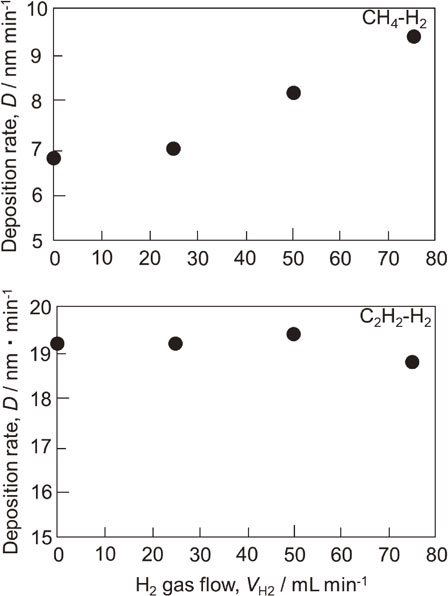
- |<
- <
- 1
- >
- >|
-
Hajime Kato, Hideaki Ikehata, Shinji Mitao, Hironori Aoyama, Kouji Tan ...Article type: Regular Article
2022 Volume 86 Issue 10 Pages 191-200
Published: October 01, 2022
Released on J-STAGE: September 25, 2022
Advance online publication: August 05, 2022JOURNAL FREE ACCESS FULL-TEXT HTMLA secondary liquid phase with a droplet shape is separated from the primary liquid phase in Cu-Ni-Fe-Mo-Si alloy during Laser Metal Deposition process. In the subsequent quenching process, the secondary liquid phase solidifies into hard particles that are dispersed in the primary matrix phase. The increase in Ni content suppresses the coarsening of the hard particles, but the mechanism of the phenomenon has not been clarified. In this study, we investigated the effects of Ni content on the hard particle sizes, mainly focusing on Marangoni effect controlled by the temperature variation of interfacial energy. The effects of Ni content on the hard particle size were analyzed based on the change in the start temperature of the separation of two liquid phases (L1 and L2) and the temperature dependence of interfacial energy with Ni content calculated by thermodynamic calculations. The results showed that Ni content had little effect on the temperature variation of interfacial energy. On the other hand, an increase in Ni content decreases the temperature of L2 droplet formation and shortens the time to solidification, resulting in reduced moving distance of the droplet. Therefore, the collision frequency of L2 droplets caused by the Marangoni effect was reduced and coarsening of the droplets was suppressed.
 Back scattered electron images of (a) 5Ni, (b) 15Ni, (c) 25Ni. (d) Relationship between moving distance of droplet and maximum size of hard grain. Fullsize ImageView full abstractDownload PDF (8042K) Full view HTML
Back scattered electron images of (a) 5Ni, (b) 15Ni, (c) 25Ni. (d) Relationship between moving distance of droplet and maximum size of hard grain. Fullsize ImageView full abstractDownload PDF (8042K) Full view HTML -
Takuya Sakuragi, Daiki Fuwa, Ichiyou Nakayama, Takumi NagamoriArticle type: Regular Article
2022 Volume 86 Issue 10 Pages 201-209
Published: October 01, 2022
Released on J-STAGE: September 25, 2022
Advance online publication: August 01, 2022JOURNAL FREE ACCESS FULL-TEXT HTMLIn die casting, laminations are a serious problem because they cause blisters, stripping defects and zinc deposition on the mold surface. Blisters and stripping defects reduce the quality of the product, and zinc deposits on the mold surface reduce productivity. Therefore, the analytical prediction of the risk of lamination formation and the optimization of the gating system for reducing the occurrence of defects due to laminations are very important before designing a mold. To optimize the gating system, we used an evaluation criterion formulated using the shear rate of the molten metal flow in a die casting simulation. In this study, we proposed a coupling analysis method consisting of mold temperature and mold filling analyses, and applied it to the optimization of a gating system based on the evaluation criterion. Using this method, we eliminated the occurrence of blisters due to laminations after plating.
Mater. Trans. 61 (2020) 2393-2401に掲載
 (a) Prediction of lamination formation by simulation. (b) Blisters generated by actual die casting (c) Microscopy images of blisters observed in areas A and B. Fullsize ImageView full abstractDownload PDF (6180K) Full view HTML
(a) Prediction of lamination formation by simulation. (b) Blisters generated by actual die casting (c) Microscopy images of blisters observed in areas A and B. Fullsize ImageView full abstractDownload PDF (6180K) Full view HTML -
Koki Okada, Akio NishimotoArticle type: Regular Article
2022 Volume 86 Issue 10 Pages 210-215
Published: October 01, 2022
Released on J-STAGE: September 25, 2022
Advance online publication: August 19, 2022JOURNAL FREE ACCESS FULL-TEXT HTMLFor reducing the frictional losses on the sliding surfaces of mounting parts and improving the wear resistance in order to extend the life of the component, diamond-like carbon (DLC) film coating has been considered, in recent years. However, reduction of the long processing time involved is desirable for mass production. For achieving this, the effect of mixing hydrocarbon gas and hydrogen gas in the deposition process is compared, and the differences in the resulting DLC films are determined in this study. DLC films are deposited on Si wafers through radio frequency plasma chemical vapor deposition (RF-PECVD), with a mixture of methane gas and hydrogen (dilution gas) as the raw material. In addition, DLC films are prepared by mixing acetylene gas with hydrogen gas for comparison, and the effect of the hydrogen gas mixture on the deposition rate, composition, and hardness of the films is confirmed. When hydrogen gas is mixed with methane gas, the deposition rate increases with the increase in the ratio of hydrogen gas in the raw material, and the percentage of sp3 bonds increases; however, the hardness and elastic modulus decrease. Furthermore, the adhesiveness deteriorates with the increase in the hydrogen gas ratio.
Mater. Trans. 63 (2022) 351-356に掲載.Fig. 1を修正.
 View full abstractDownload PDF (3087K) Full view HTML
View full abstractDownload PDF (3087K) Full view HTML
- |<
- <
- 1
- >
- >|